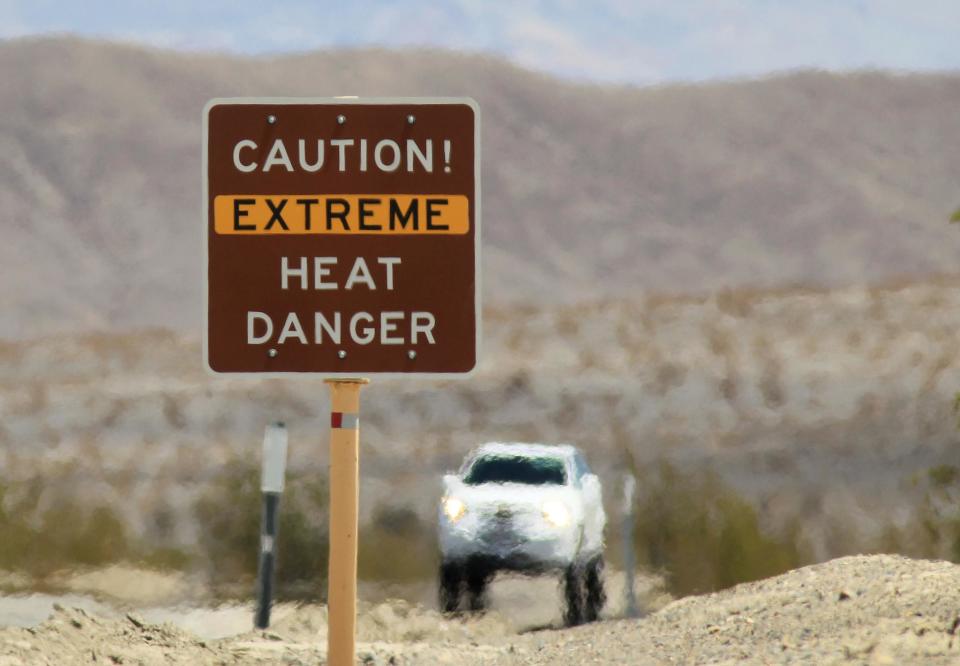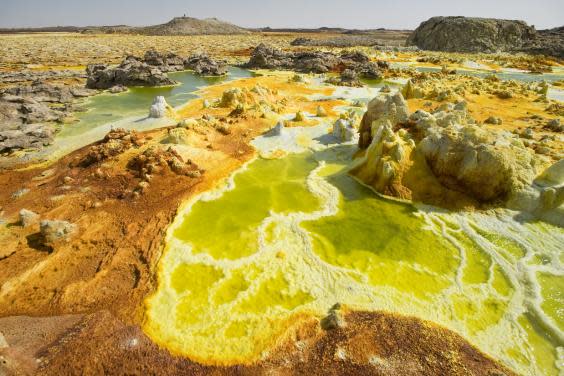The 10 hottest places on earth, from Death Valley to Tunisia

Death Valley may have just set a new record after hitting sweltering air temperature of 54 degrees Celsius on Sunday 16 August 2020. If verified, it would be the hottest temperature recorded there since 1913 – and possibly the hottest verified temperature recorded anywhere in the world. We take a look at where else is too hot to handle.
Death Valley, California, USA
The aptly named Furnace Creek currently holds the record for hottest air temperature ever recorded. The desert valley reached highs of 56.7 degrees in the summer of 1913, which would apparently push the limits of human survival. There is debate over the validity of this temperature, but even if proved false Furnace Creek still comes top: a temperature of 54.4C was recorded this year. Average temperature highs today reach 47 degrees during summer, and it’s the driest place in the States.
Kebili, Tunisia
This desert town is known for its quality dates, which obviously don’t mind the average temperature highs of 40+ degrees during the summer. The highest temperature on record is a whopping 55 degrees, which it hit in July 1931.
Mitribah, Kuwait
Mitribah, a remote area of northwest Kuwait, hit a sweltering 53.9C on 21 2016. Not only was it the third highest temperature ever recorded, it’s also the highest temperature ever recorded for the continental region of Asia.

Turbat, Pakistan
Turbat, a city located in southern Balochistan, Pakistan, recorded the fourth highest ever temperature on 28 May 2017: 53.7 degrees.
Dallol, Ethiopia
This hydrothermal field with salt formations, acidic hot springs, and gas geysers had an average daily maximum temperature of 41 degrees recorded from 1960 to 1966. These soaring numbers mean it has the highest average temperature of any inhabited place on earth.
Aziziyah, Libya
The former capital of the Jafara district, 25 miles south of Tripoli, used to claim the title of hottest place on earth – in 1922 the temperature was recorded as a sweltering 58 degrees. However, it was stripped of its title in 2012 when meteorologists declared this invalid due to a number of factors, including the fact that the person who recorded it was inexperienced. However, the town still regularly experiences temperatures of over 48 degrees in midsummer.

Wadi Halfa, Sudan
During the year, there is virtually no rainfall in Wadi Halfa, a sweltering city located on the shores of Lake Nubia in Sudan. June is the hottest month, with average temperature highs of 41 degrees – the hottest temperature ever recorded there was 53 degrees in April 1967.
Dasht-e Loot, Iran
This desert plateau has the hottest ground temperatures on the planet – satellite measurements taken between 2003 and 2009 found a maximum temperature of a staggering 70.7 degrees. Needless to say, the region is uninhabited.

Bandar-e Mahshahr, Iran
This sweltering city hit the second highest heat index on record – the heat index combines air temperature and relative humidity. Bandar-e Mahshahr registered a heat index of 74 degrees in July 2015. The hottest recorded temperature there is 51 degrees.
Ghadames, Libya
This oasis in the middle of the desert is now a Unesco World Heritage Site thanks to its iconic huts made from mud, which help protect the 7,000 inhabitants from the intense heat. Known as “the pearl of the desert”, it reaches average highs of 40 degrees and a temperature of 55 degrees was once recorded (though it remains unverified).

